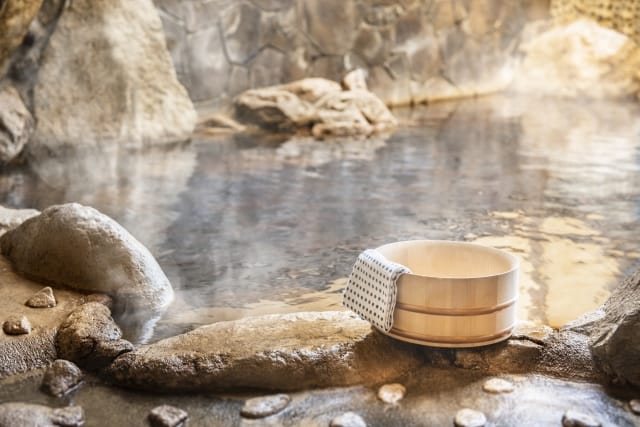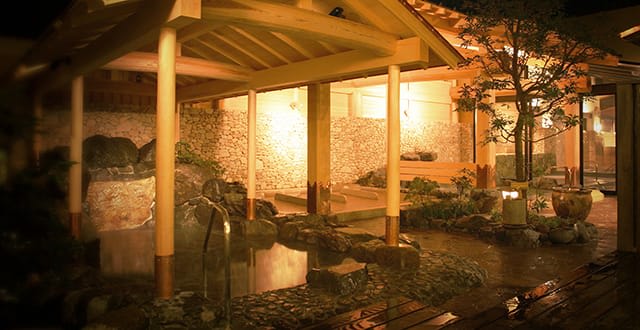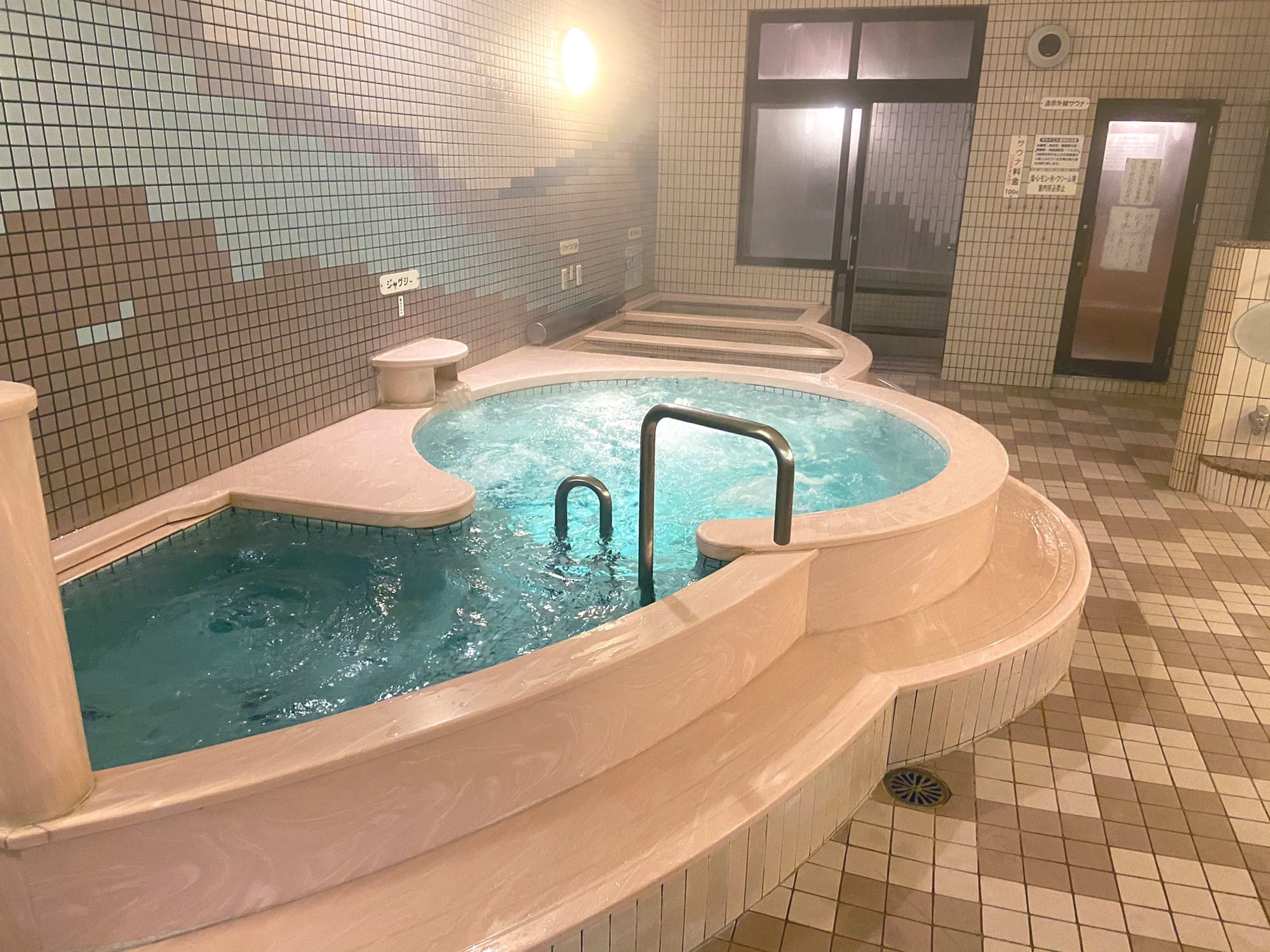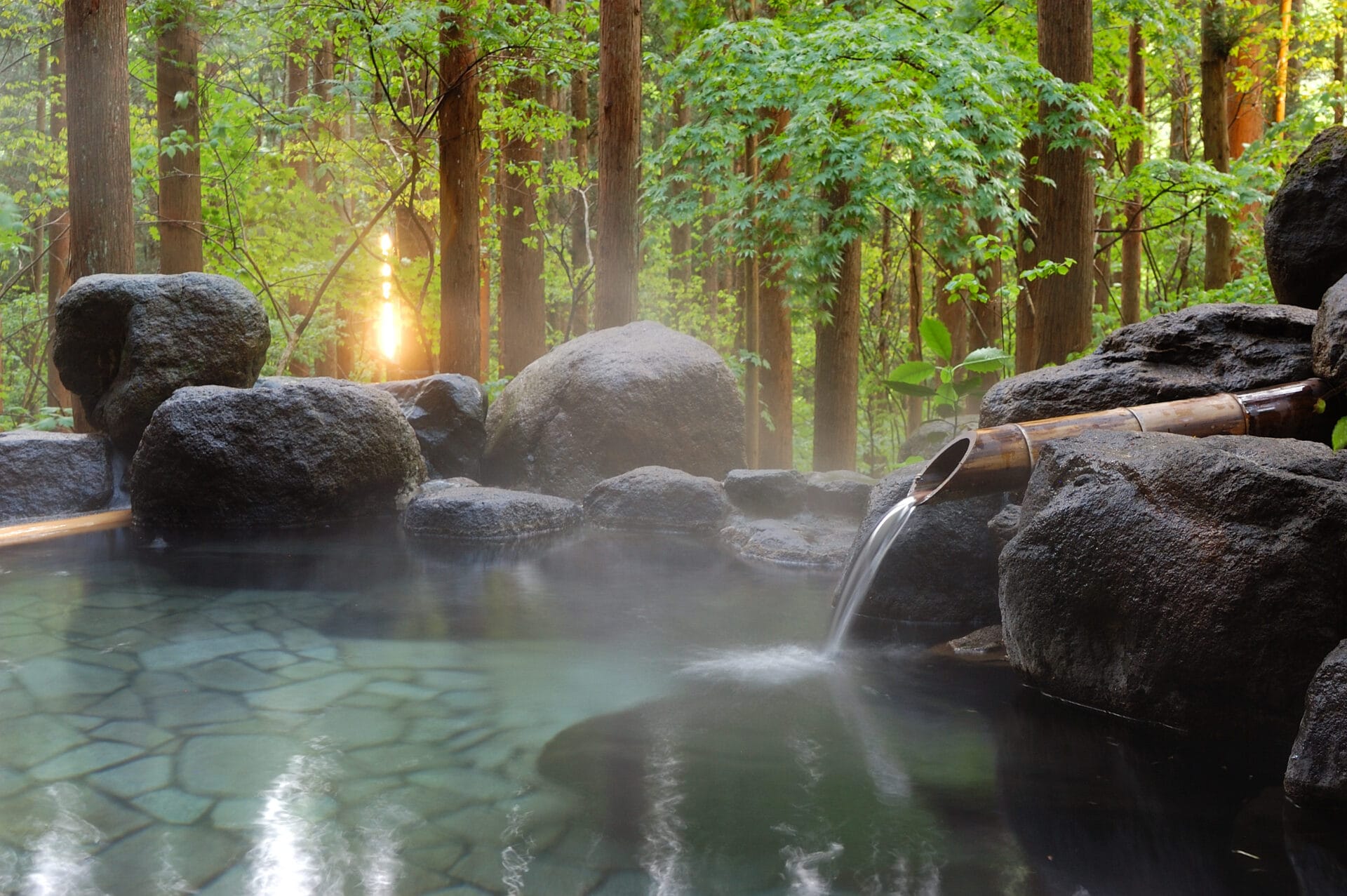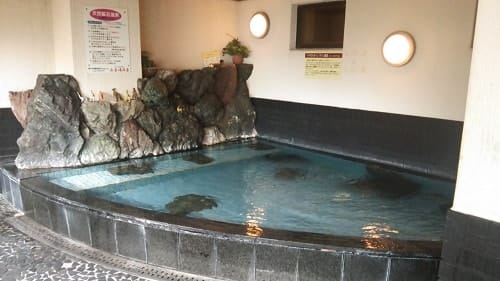10 Best Kyoto’s Public Baths 2025! Must-Try Japanese Sentou & Onsen
I visited Kyoto several times between August and October 2024. I'm updating this article to share the new charms of Kyoto I discovered and to recommend the latest spots worth visiting. In this update, I've also included the newest information about Kyoto for 2025.
Another reason for this update is the growing interest in tours that allow visitors to fully experience Kyoto's traditions and culture.
Due to Kyoto's deep history and traditions, first-time visitors often find it challenging to explore the city efficiently while gaining a deeper understanding. This has led to increasing popularity of guided tours like those offered by Magical Trip, where local guides help tourists navigate the city.
Notably, Magical Trip's tour, which was ranked No.1 among all tours on Tripadvisor in 2024, is experiencing high demand in 2025.

For those who want to experience Kyoto deeply and efficiently, we recommend these two tours. With guides who are well-versed in Kyoto's culture and traditions explaining the tourist spots, you'll enjoy your sightseeing several times more than if you were to explore on your own:
If you're interested in Kyoto's food culture, we also recommend the "Kyoto Night Foodie Tour," which ranked No. 6 among all tours on TripAdvisor in 2024. You can fully enjoy the cuisine of Kyoto, a city that once ranked fourth worldwide for the number of Michelin-starred restaurants.
Introduction
Kyoto is a city steeped in history and culture, boasting traditional architecture and scenic streets. Home to centuries-old temples and shrines as well as charming wooden structures, Kyoto attracts visitors from all over the world.
The city is also known for its public baths, or sento, which have long been cherished by locals as places of relaxation and community. These baths offer a great way to experience Japan’s rich bathing culture firsthand.
In this article, we’ll introduce some of the must-visit sentou and onsen spots in Kyoto that will enrich your travel experience.
Fushimi Inari-taisha Shrine, famous for its Senbon-torii, is a must-see sightseeing spot when visiting Kyoto.
In fact, did you know that there are two different courses around Fushimi Inari Taisha: a 30-minute course that allows you to see only the must-see spots, and a 2-hour course that allows you to fully enjoy the attractions of the area?
Read the following article and enjoy the best day of hiking, then hot springs!

What is “Sento”? Discover Kyoto’s Traditional Public Baths
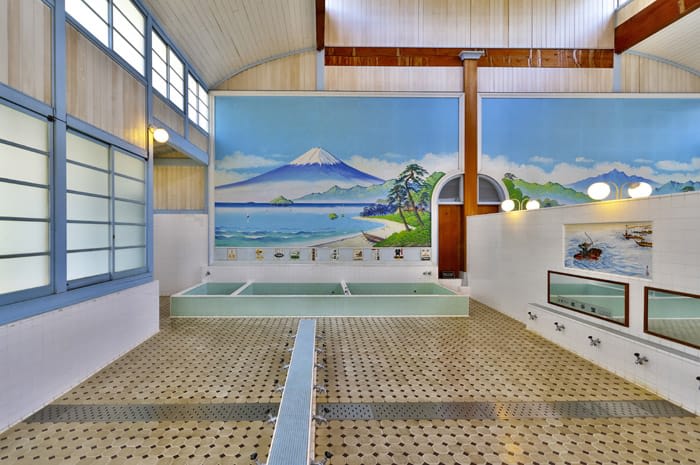
A sento is a public bathhouse where people come to bathe and relax. Dating back to around 1590, sento has been an essential part of Japanese life for centuries.
Kyoto’s sento are unique, blending tradition and culture. Many of these establishments survived World War II, preserving the pre-war charm of the city. Even today, numerous sento continue to operate in their original locations with periodic renovations, maintaining a retro ambiance beloved by locals.
Using a sento in Kyoto gives visitors a deeper appreciation of Japanese traditions and allows for interaction with local residents.
Differences between Onsen and Sento
The primary difference between an onsen and a sento lies in the water used and the ambiance.
- Onsen use natural hot spring water containing minerals that offer therapeutic benefits. These facilities are often located in resort areas, providing a relaxing atmosphere.
- Sento, on the other hand, typically use heated tap or groundwater, and are more common in urban areas. They serve as daily-use bathhouses where locals come to unwind and connect.
If you’re looking to experience local culture or meet residents, visiting a sento is highly recommended.
Recommended Hot Springs in Kyoto That Have Been Loved by Locals for Years
Funaoka Onsen
Source: Official website
Funaoka Onsen, located in Kitaku, Kyoto City, is a historic sentou (public bath) that introduced Japan's first *denkiburo* (electric bath) in 1933. The *denkiburo* uses mild electrical stimulation during the bath, which promotes relaxation and improves blood circulation.
The onsen is housed in a building that has been designated as having significant cultural and historical value. Inside, the green tiles and tatami flooring take you back to the atmosphere of a public bath from 70-80 years ago. The ceiling features intricate carvings, giving you a taste of traditional Japanese aesthetics.
Locals have cherished this onsen for generations, and you can feel the warmth of the local community when you visit. However, towels, shampoo, and body soap are not provided, so bring your own if needed.
Address: 82-1 Minamifunaokacho, Murasakino, Kita-ku, Kyoto City, Kyoto Prefecture
Hours: Mon-Sat: 3:00 PM – 1:00 AM, Sunday: 8:00 AM – 1:00 AM
Closed: None
Phone: 075-441-3735
Official Website: http://funaokaonsen.net/index.html
Tenzan no Yu
Source: Official website
Tenzan no Yu, located in Ukyoku, Kyoto City, is a natural hot spring that has been a local favorite since its opening in 2006. The water, sourced from 1,200 meters underground, is rich in sodium and calcium ions, making it great for softening and smoothing the skin.
Visitors can also enjoy a relaxing *ashiyu* (foot bath) or try "fish therapy," where small fish nibble away dead skin from your feet. This sentou offers a rental towel set (hand towel and face towel) for ¥250, and there is also shampoo and body soap available on-site.
It’s an ideal destination for those seeking soft skin and a rejuvenating hot spring experience.
Address: 55-4-7 Gano Miyanomotocho, Ukyo-ku, Kyoto City, Kyoto Prefecture
Hours: 10:00 AM – Midnight (Last entry: 11:00 PM)
Closed: 3rd Monday of each month (If it falls on a holiday, closed the following day)
Phone: 075-882-4126
Official Website: https://www.ndg.jp/tenzan/
Sagano Romantic Train
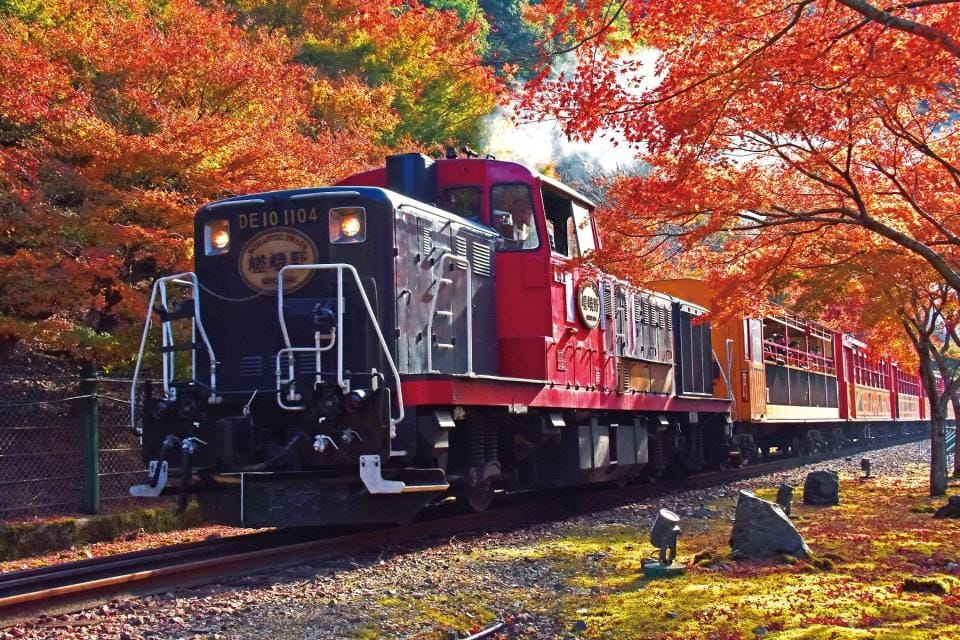
Source:Kyoto City Tourism official site
If you're visiting Sagano, you won't want to miss the scenic Sagano Romantic Train, which runs between the famous Arashiyama and Kameoka. This sightseeing train takes 25 minutes to cover a 7km stretch, offering a slow-paced journey through stunning landscapes. The classic train cars, adorned with wooden seats and warm lighting, offer an old-fashioned charm that appeals to tourists. The highlight of the year is the autumn foliage, illuminated at night for a magical experience.
If you are interested in Autumn foliage in Kyoto, check the article below! I summarized how and where you can enjoy Autumn foliage in Kyoto as much as possible.
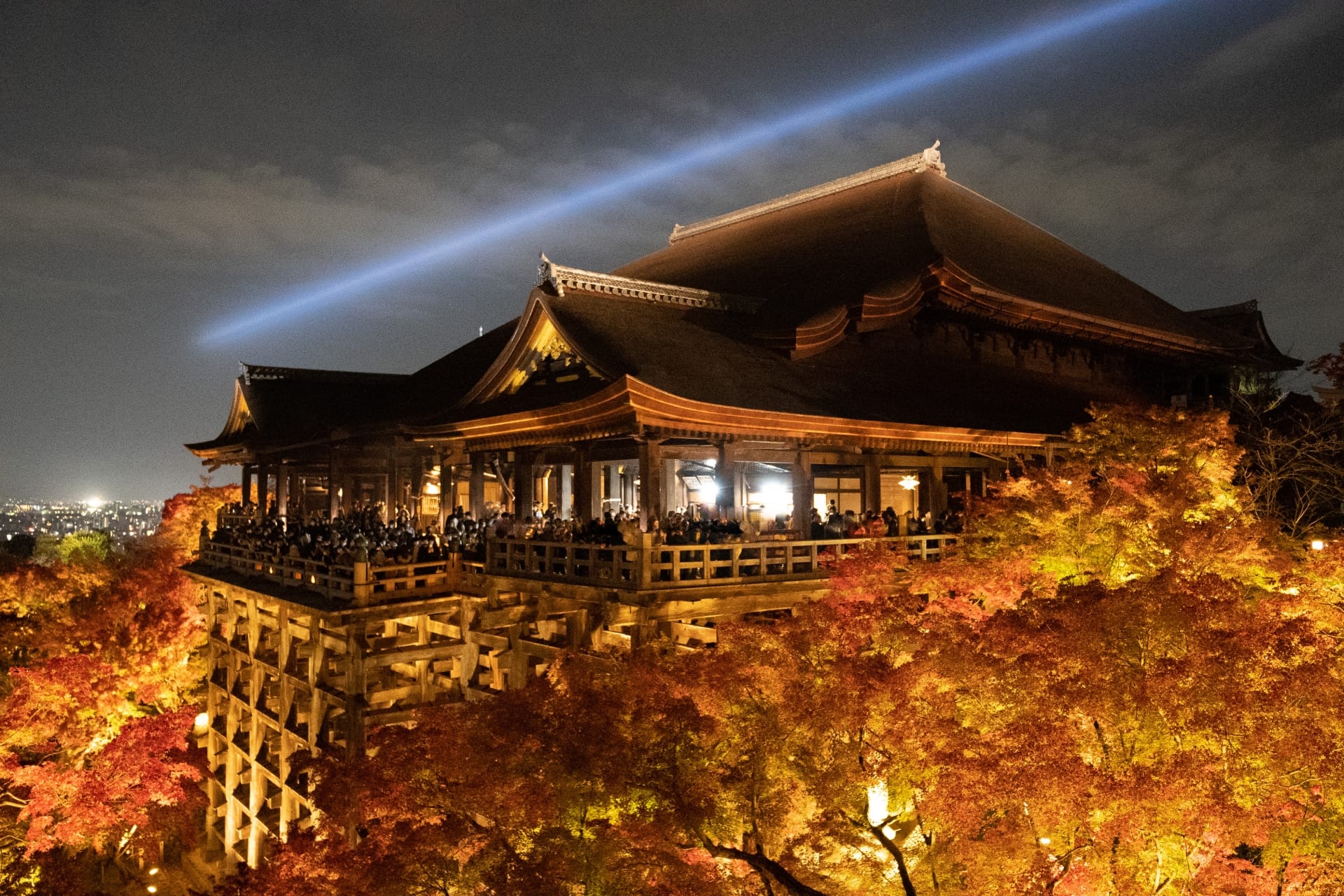
Sauna Umeyu
Source: Official X
Umeyu, located in Shimogyo, Kyoto City, was rejuvenated in 2015 after being taken over by a new owner, saving it from closure. This sentou uses firewood, instead of gas, to heat the bathwater, giving the bath a unique, relaxing aroma. The sauna is well-maintained and comes with a cold plunge bath for alternating between hot and cold treatments.
Open late and offering morning baths on weekends, Umeyu is a great option for those looking to unwind at their own pace. Face towel rentals are available for ¥50, and the sentou provides shampoo and body soap.
Address: 175 Iwatakicho, Shimogyo-ku, Kyoto City, Kyoto Prefecture
Hours: 2:00 PM – 2:00 AM (6:00 AM – 2:00 AM on weekends)
Closed: Thursdays
Phone: 080-2523-0626
Official Website: https://yutonamisha.com/sento/umeyu/
Kurama Onsen
Source: Official website
Kurama Onsen, located at the foot of Mount Kurama in Sakyoku, is about an hour's drive from Kyoto Station, offering a quiet escape from the city. The natural sulfur hot spring, famous for its beautifying effects, is known as "Bijin no Yu" (The Beautiful Woman's Bath). This hot spring, rich in minerals, is believed to help with nerve pain, backaches, and skin conditions.
The open-air bath allows you to enjoy seasonal landscapes, from spring greenery to winter snow, while soaking in the therapeutic waters. Currently, Kurama Onsen is temporarily closed due to the COVID-19 pandemic, but it’s expected to reopen in the near future.
Address: 520 Kurama Honmachi, Sakyoku, Kyoto City, Kyoto Prefecture
Phone: 075-741-2131
Official Website: https://kurama-spa.com/
If you are interested in Kurama Area, check the article below! I summarized how and where you can enjoy Kurama Area as much as possible.

Enjoy Kyoto’s Spirituality, Traditions, and Hot Springs (Sentou)
Experience Temples, Festivals, and Kurama Onsen at Mount Kurama
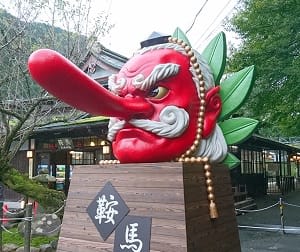
Source: Eizan Train
Mount Kurama, standing at 584 meters in Sakyo Ward, Kyoto, offers lush forests and scenic hiking trails throughout the seasons.
At the heart of this area is an ancient shrine established around the year 800. Surrounded by serene nature, this shrine is known as a mystical power spot, drawing countless visitors seeking tranquility and spiritual experiences.
Every year on October 22nd, Mount Kurama hosts the *Kurama no Himatsuri* (Kurama Fire Festival). Participants carry taimatsu (traditional torches) along the Kurama Highway, creating a mysterious spectacle of fire and light. This event, cherished by locals, reflects the region’s deep cultural heritage.
Visitors can enjoy both the soothing waters of Kurama Onsen and the peaceful presence of age-old temples. Through the combination of festivals and history, tourists will discover the profound nature of Kyoto's culture. Unwind in the onsen, connect with traditions, and immerse yourself in a unique spiritual atmosphere.
If you are interested in Kurama Area, check the article about Kurama Dera Temple! I summarized in more details and how I felt there.
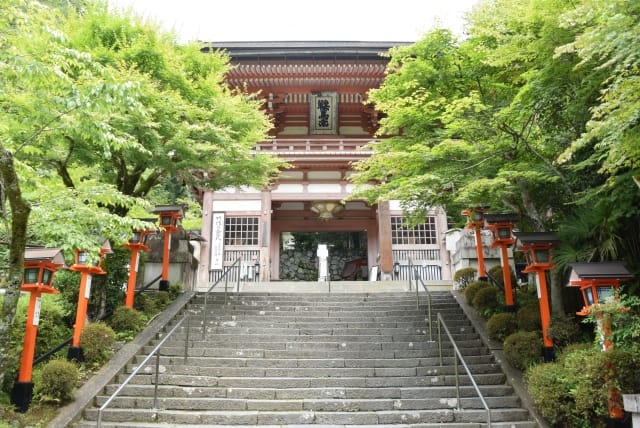
Gokouyu: An Authentic Kyoto Sentou
Source: Official website
Gokouyu is a beloved sentou (public bathhouse) in Sakyo Ward, Kyoto, and has been welcoming visitors since 1934. It celebrated its 90th anniversary in 2024, making it one of the city's iconic bathhouses.
A key attraction at Gokouyu is its gambanyoku—a bedrock bath where heated stones provide therapeutic warmth. Visitors can lie on these natural stones to relax, ease fatigue, and improve circulation. The facility uniquely uses radium stones, believed to alleviate joint pain, injuries, and other ailments.
The bathhouse offers a variety of baths, including those infused with radium minerals, electric baths, and medicinal herbal baths, ensuring guests enjoy diverse relaxation options. Gokouyu is perfect for those wanting to experience multiple types of baths in a single visit.
Please note that towels, shampoo, and conditioner are not provided but can be purchased at the following prices:
- Towel: 140 yen
- Shampoo: 40 yen
- Conditioner: 40 yen
Address: 590-12 Kakimoto-cho, Shimogyo-ku, Kyoto
Opening Hours:
- Weekdays: 14:30 – 24:30
- Sundays: 07:00 – 24:00
- Holidays: 11:00 – 24:00
Closed: Every Monday and the third Tuesday of the month
Phone: 075-812-1126
Official Website: https://www.gokouyu.net
Relaxing Ryokan with Hot Springs in Arashiyama
Arashiyama, located in Nishikyo Ward, Kyoto, is a must-visit destination famous for its cherry blossoms and autumn foliage. This area has been recognized in the *Top 100 Cherry Blossom Spots* and *Top 100 Autumn Foliage Sites in Japan*.
The Togetsukyo Bridge, a symbolic landmark, offers picturesque views of the river and surrounding mountains. Visitors can also explore the Tenryu-ji temple, a UNESCO World Heritage site, or hike through the Iwatayama Monkey Park to meet its playful residents.
Many ryokan (traditional inns) in the Arashiyama area feature hot springs, making them perfect for an extended stay. Given the popularity of this destination, staying overnight at a ryokan allows tourists to enjoy the onsen, unwind, and start exploring early the next morning when the area is less crowded. Morning sightseeing offers a peaceful and leisurely experience, free from the usual crowds.
Embrace Kyoto’s harmony of history, nature, and relaxation by visiting these hotspots—whether it’s a soak in an onsen or exploring the serene temples of Mount Kurama and Arashiyama.
Arashiyama Benkei
Source:Official website
Arashiyama Benkei is a traditional Japanese inn (ryokan) in Ukyo Ward, Kyoto, blending serene nature with authentic cultural experiences. Guests can savor seasonal kaiseki meals made with the finest ingredients in tranquil Japanese-style rooms.
The inn also offers large communal baths and private open-air hot spring baths (rotenburo) with breathtaking views of Arashiyama's landscape. However, these baths are available exclusively to guests, and day-use bathing is not permitted.
Note: The inn is currently closed for renovations, but once reopened, visitors can enjoy a luxurious private retreat in a peaceful atmosphere.
- Location: Sagatenryuji Susukinobabacho 34, Ukyo Ward, Kyoto
- Official Website: https://benkei.biz/
- Phone: 075-872-3355
Arashiyama Onsen Hanakaida
Source:Official website
Hanakaida is a charming hotel near the iconic Togetsukyo Bridge in Kyoto’s Nishikyo Ward. Its traditional design, enhanced with enchanting nighttime lighting, creates a magical ambiance. Guests staying in river-facing rooms can indulge in views that shift with the seasons.
Hanakaida's standout feature is its outdoor hot springs. In addition to private open-air baths, it boasts the only gender-specific panoramic baths in Arashiyama. These rotate between men’s and women’s use, allowing guests to enjoy both. Given its popularity, reservations should be made at least a week in advance.
- Location: Nakaoshitacho 57, Nishikyo Ward, Kyoto
- Official Website:http://www.hanaikada.co.jp/
- Phone: 075-861-0228
- Day-use Plan: 11:00 AM – 2:00 PM
- No Closing Days.
Arashiyama Onsen Kadensho
Source:Official website
Opened in 2011, Kadensho offers a unique combination of Japanese aesthetics and modern comfort. Located right in front of Hankyu Arashiyama Station, the hotel provides an easy and relaxing experience without attendants (nakai), giving guests more privacy during their stay.
Kadensho offers five private baths in addition to public hot spring baths, reputed for their benefits in relieving muscle and nerve pain. These baths also promote healthy skin, adding a luxurious touch to any visit. Due to high demand, it’s recommended to book well in advance—sometimes even a month ahead.
- Location: Nishikyo Ward, Nishi Ichikawacho 5-4, Kyoto
- Official Website:https://dormy-hotels.com/resort/hotels/kadensho/
- Phone: 075-863-0489
- Operating Hours: Check-in: 3:00 PM / Check-out: 11:00 AM
If you are interested in Arashiyama Area, check the article below! I summarized how and where you can enjoy Arashiyama Area as much as possible.
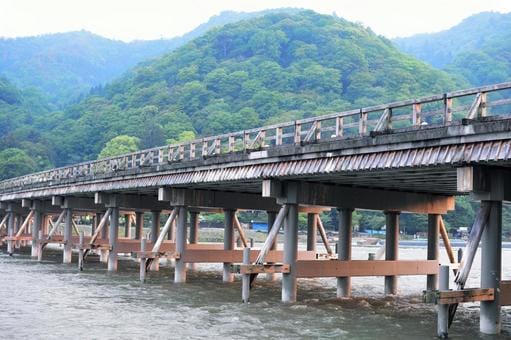
3 Key Etiquette Tips for Onsen and Sentou Visits in Japan
To ensure a pleasant experience at any onsen or sentou, it’s essential to follow these simple etiquette rules:
1. Rinse before entering the bath
Pour water over yourself before soaking. This helps stabilize blood pressure and keeps the bathwater clean.
2. Avoid walking around wet
Dry off lightly with a towel before entering the changing area to prevent others from slipping on wet floors.
3. Keep towels and hair out of the bathwater
While soaking, avoid letting towels or hair touch the bathwater, as it ensures hygiene and prevents discomfort for other bathers.
By respecting these customs, you’ll enjoy a relaxing and culturally immersive bathing experience.
